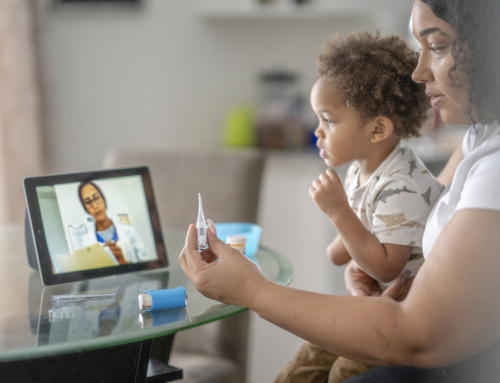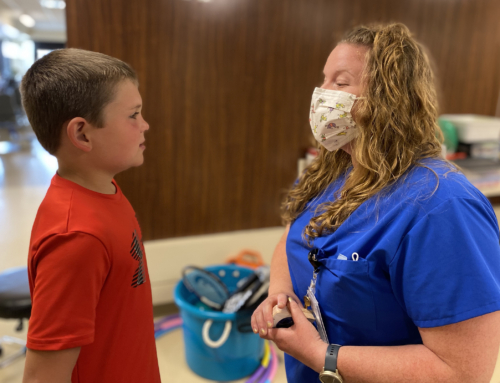By Lauren Glendenning, For Memorial Regional Health
The Best Way to Fight the Common Cold Is Through Prevention
Flu season doesn’t officially hit until October, but as children head back to school, it’s important to remember the ways to prevent sickness such as the common cold.
The cold and the flu have similar symptoms, which can make it difficult to tell the difference, but cold symptoms are generally milder, according to the Centers for Disease Control and Prevention. And while there’s an annual flu vaccine available, there are no vaccines for the common cold.
Adults have an average of two to three colds per year, and children have even more, according to the CDC. That’s why it’s important to focus on prevention before it’s too late. If your child does happen to catch a cold this school year, reach out to our pediatrics team at Memorial Regional Health. If that cold (or flu) happens to make its way to the adults in your family, our family medicine team would love to help you find the source of the issue.
“Symptoms usually include sore throat, runny nose, coughing, sneezing, headaches and body aches. Most people recover within about 7 to 10 days,” according to the CDC. “However, people with weakened immune systems, asthma or conditions that affect the lungs and breathing passages may develop serious illness, such as pneumonia.”
Prevention Methods
Germs are everywhere, especially in schools. The CDC warns that if you touch a surface where germs are lurking and then touch your face, you can get sick.
Washing your hands with soap and water is one of the best ways to avoid getting sick and to prevent the spread of colds, the flu and other diseases. Hand sanitizers are not as effective at removing all types of germs or harmful chemicals. When it’s the only option, make sure you use an alcohol-based hand sanitizer with at least 60 percent alcohol.
At school, students and teachers should always wash their hands:
- Before eating.
- After using the toilet.
- After blowing their nose.
- After coughing.
- After sneezing.
Washing your hands isn’t enough, though. It’s essential that you wash them correctly, according to the CDC. How much soap does it take? Should you use hot or cold water? How long does it take before germs are removed? Make sure your children know the correct way to wash their hands — and when to wash them — before they head off to school. The CDC has a video tutorial at www.cdc.gov/handwashing
How to Wash Your Hands
- Wet your hands with clean, running water (warm or cold), turn off the tap, and apply soap.
- Lather your hands by rubbing them together with the soap. Be sure to lather the backs of your hands, between your fingers, and under your nails.
- Scrub your hands for at least 20 seconds. Need a timer? Hum the “Happy Birthday” song from beginning to end twice.
- Rinse your hands well under clean, running water.
- Dry your hands using a clean towel or air dry them.
Memorial Regional Health Suction Clinic
MRH’s Suction Clinic is open 24 hours a day, 7 days a week.
Since babies can’t blow their own noses, they need help clearing their airways during bouts of colds and flu. At the Suction Clinic, MRH respiratory therapists use a nasopharyngeal suction machine to suck out secretions. Therapists also evaluate your child’s respiratory rate and oxygen saturation. The cost is $128 per visit, and the visit is billed to insurance. The Suction Clinic requires a prescription from a provider.
For MRH pediatric care including well child checks, immunizations, sports physical exams, treatment for infections or injuries and more, call 970-826-2480 for more information or to schedule an appointment.
About the Common Cold
- Every year, adults have an average of two to three colds, and children have even more.
- Many viruses can cause colds, but rhinoviruses are the most common. Infections spread through the air and close personal contact.
- There is no cure for a cold. To feel better, you should get lots of rest and drink plenty of fluids.
- Symptoms of a cold usually include sore throat, runny nose, coughing, sneezing, headaches and body aches.
- To reduce your risk of getting a cold, wash your hands often with soap and water, and avoid touching your face with unwashed hands.
- Antibiotics do not treat the common cold or the flu, both of which are viruses. Antibiotics only work for bacterial infections.
Source: Centers for Disease Control and Prevention and Memorial Regional Health





![Well-child checks vs. sports physicals — what’s the difference? [INFOGRAPHIC]](https://memorialregionalhealth.com/wp-content/uploads/Well-Child-Checks-vs.-Sports-Physicals-Image-500x383.jpg)
